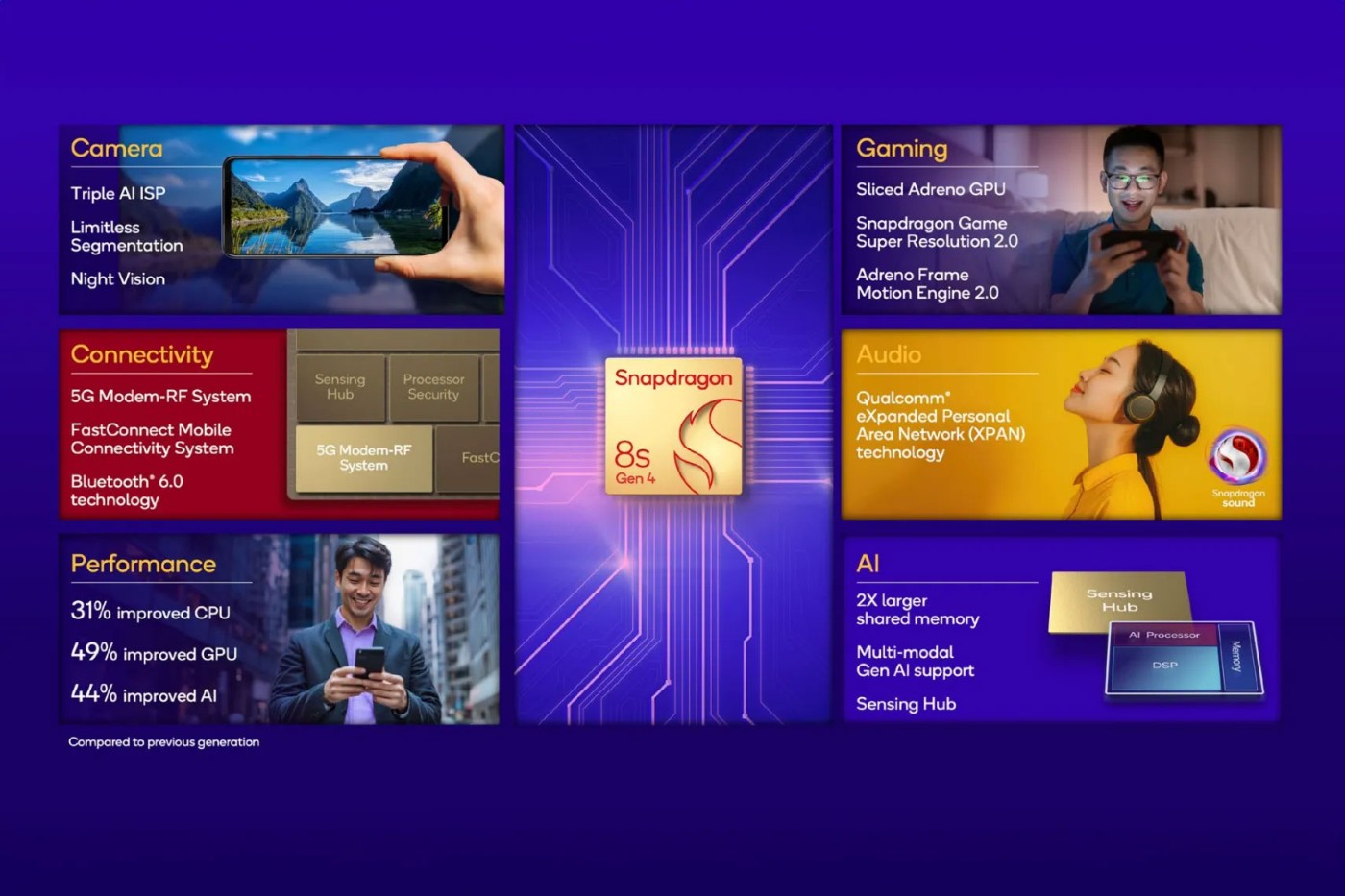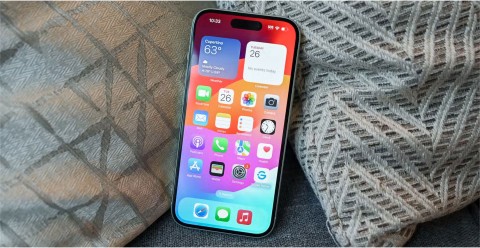The most commonly deficient nutrients in the diet

Diet is important to our health. Yet most of our meals are lacking in these six important nutrients.
Qualcomm has officially introduced a new line of near-flagship mobile chips aimed at manufacturers who want to bring a near-flagship experience, but at a significantly higher price point than traditional flagship products. The Snapdragon 8s Gen 4 is positioned just below the top-end Snapdragon 8 Elite line and offers reasonable upgrades over its predecessor.
Note in the name
Keeping track of Qualcomm's naming changes can be a little confusing if you haven't been following them closely. The "S" versions are typically more power-efficient variants that retain key features like connectivity but sacrifice some core performance. The Snapdragon 8s Gen 4 (not "8s Elite" for reasons we'll discuss below) sits somewhere between the Snapdragon 8 Gen 3 (the flagship chip for 2024, which will appear in the Galaxy S24 and OnePlus 12) and the mid-range chips.
Snapdragon 8s Gen 4 Specifications
In terms of specifications, the Snapdragon 8s Gen 4 is equipped with an octa-core CPU, including a main Cortex X3 core clocked at 3.2GHz, three Kyro cores based on Arm's Cortex A720 design clocked at 3.0GHz, two more cores at 2.8GHz for more power efficiency, and finally two additional A720 cores at 2.0GHz for efficient processing tasks. This chip is still manufactured on TSMC's 4nm N4P process instead of the more advanced 3nm process:
While the specs are slightly lower than the flagship Snapdragon 8 Gen 3, they're still a significant upgrade over the Snapdragon 8s Gen 3, which only uses the power-efficient A520 core for low-performance tasks. Qualcomm claims a 31% performance increase while power consumption is reduced by up to 39% compared to the 8s Gen 3.
Surprisingly, Qualcomm is sticking with the Arm v9.2 reference design instead of using its proprietary Oryon cores like the Snapdragon X and Snapdragon 8 Elite laptop chips. Notably, Qualcomm recently won a lawsuit against Arm, which had threatened to revoke its license for allegedly using its intellectual property to develop its own chip designs. This could be one reason for the company to stick with the old name instead of switching to the “Elite” naming scheme. Another reason could be to maintain exclusivity for its higher-end chips.
In terms of GPU, the Snapdragon 8s Gen 4 is equipped with a new Adreno 825 GPU, which is said to be closer to the Adreno 830 that handles graphics tasks on the 8 Elite series than the Adreno 750 on the 8 Gen 3. Qualcomm claims a performance increase of around 50% here, but only when compared to the 8s Gen 3. The GPU also supports ray tracing on the device, along with Snapdragon Elite Gaming features like Frame Motion Engine and Super Resolution for upscaling low-end games. The GPU is said to be capable of displaying game images in HDR10, HDR10+ and Dolby Vision - although real-world performance will depend on whether game developers support it.

The chip also gets a significant upgrade in AI processing, with a 44% performance increase over the previous generation. Since the Snapdragon 8s Gen 3 was able to run large language models on the device, the same is expected for the 8s Gen 4. Qualcomm doesn't disclose the exact computational specs of the NPU, but says it uses double the shared memory and supports multimodal AI models.
In terms of connectivity, the Snapdragon 8s Gen 4 also comes with the new X75 modem, which allows for download speeds of up to 4.2Gbps, although mmWave support has been dropped. Additionally, the chip is ready for Wi-Fi 7 and Bluetooth 6.0.
There's no official word yet on which brands or phones will be the first to use the chip, but the list of expected devices will likely include traditional names like Xiaomi, Poco, and Motorola.
Diet is important to our health. Yet most of our meals are lacking in these six important nutrients.
At first glance, AirPods look just like any other true wireless earbuds. But that all changed when a few little-known features were discovered.
In this article, we will guide you how to regain access to your hard drive when it fails. Let's follow along!
Dental floss is a common tool for cleaning teeth, however, not everyone knows how to use it properly. Below are instructions on how to use dental floss to clean teeth effectively.
Building muscle takes time and the right training, but its something anyone can do. Heres how to build muscle, according to experts.
In addition to regular exercise and not smoking, diet is one of the best ways to protect your heart. Here are the best diets for heart health.
The third trimester is often the most difficult time to sleep during pregnancy. Here are some ways to treat insomnia in the third trimester.
There are many ways to lose weight without changing anything in your diet. Here are some scientifically proven automatic weight loss or calorie-burning methods that anyone can use.
Apple has introduced iOS 26 – a major update with a brand new frosted glass design, smarter experiences, and improvements to familiar apps.
Yoga can provide many health benefits, including better sleep. Because yoga can be relaxing and restorative, its a great way to beat insomnia after a busy day.
The flower of the other shore is a unique flower, carrying many unique meanings. So what is the flower of the other shore, is the flower of the other shore real, what is the meaning and legend of the flower of the other shore?
Craving for snacks but afraid of gaining weight? Dont worry, lets explore together many types of weight loss snacks that are high in fiber, low in calories without making you try to starve yourself.
Prioritizing a consistent sleep schedule and evening routine can help improve the quality of your sleep. Heres what you need to know to stop tossing and turning at night.
Adding a printer to Windows 10 is simple, although the process for wired devices will be different than for wireless devices.
You want to have a beautiful, shiny, healthy nail quickly. The simple tips for beautiful nails below will be useful for you.













